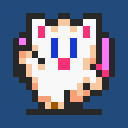I was having a discussion about this with a friend recently.
Back in the days of yore, fighting games would have brand new “versions” that would be repackaged with flashy names and multiple characters. These games often had yearly release cycles, or sometimes even biyearly cycles (MvC3, in particular) and there were obvious problems with this. People felt like they were “left behind” on older versions if they didn’t choose to upgrade and it would make purchasing options for any outsider very confusing (especially if the games had confusing sub-titles, looking at BlazBlue!) The cherry on top: People outside of the fighting game sphere would perceive these new games as a “rip off” even if the value of the package wasn’t a question to die-hard fans. An example would be Super Street Fighter IV launching with 10 new characters and 5 new stages for 40 dollars – a price that is basically in-line with modern “seasons” in the worst case scenario and it can be debated that it was actually a great value when you consider all of the additional work and polish to other UI and gameplay elements.
Since roughly 2016, these practices have shifted radically. Now, games often release new characters as part of “seasons” where roughly 5 characters are released over the course of a year – one character at a time.
So my question: Has this been effective in getting you to relaunch the game after taking a break?
My personal opinion is that this new release cadence has been a bit worse for my ability to play and enjoy fighting games after having a break. Often, I find that my biggest issue is that there’s no longer a “good time” to hop back into the game.
When you only release 1 character every few months, every new update causes a vast majority of the player base to play the new character for a few days. This means that trying to play the game online will either result in a series of mirror matches or cases where you’re playing against the same character consistently. This wasn’t an issue when new “versions” of the game would release, as the number of new characters would often make match-ups diverse since all characters would be new simultaneously. Inversely, if you wait too long, you’ll be playing against an already dried up player base of the same people who would normally play the game.
Lastly, I feel like the “new game” feeling has been completely removed, where seasons hardly make the game feel like a whole new product. There have been some pleasant surprises, like booting up Guilty Gear Strive to find a much nicer, polished looking main menu compared to launch. However, these types of changes are few and far between. Additionally, some parts of the game don’t seem to change ever like the in-game UI or refinement of existing characters’ gimmicks.
So what’s your take on this. Do you think this new release cycle has been helpful or hurtful when it comes to regularly revisiting fighting games?
The new way is better, and it’s not close. The only thing I miss from the old days is the ability to preserve each individual old version and old meta, whereas these days we just update the new version on top of it. If you’re the kind of player who felt like Happy Chaos ruined Guilty Gear Strive, you can’t really go back to a version before he existed. Up until this latest patch, I felt like the best time in the game’s lifespan so far was right before Happy Chaos launched (for reasons beyond the state that Happy Chaos launched in). Thankfully, this new season is great, but we might not have been so lucky.
People outside of the fighting game sphere would perceive these new games as a “rip off”
I’m going to wager plenty of people inside that sphere would consider them to be a rip-off as well. Super Street Fighter IV didn’t change any more about characters’ gimmicks than your typical seasonal update does in modern games. They had limited ability to patch games back then, and the new boxed copy was all they could do, but this new method allows them to demonstrably keep a larger pool of players online playing the game than the old method did, which provides more value to future purchasers, which theoretically drives more sales before we even get into the economics of Street Fighter costumes. I know when I bought Guilty Gear Xrd Sign, I wasn’t too compelled to pick up Revelator when it came out, since it appeared to be barely different from the version I already had, and no one was really playing that previous one online anyway.
An example would be Super Street Fighter IV launching with 10 new characters and 5 new stages for 40 dollars – a price that is basically in-line with modern “seasons” in the worst case scenario and it can be debated that it was actually a great value when you consider all of the additional work and polish to other UI and gameplay elements.
That’s $40 in 2010 money. It would be more like $56 in today’s dollars.

